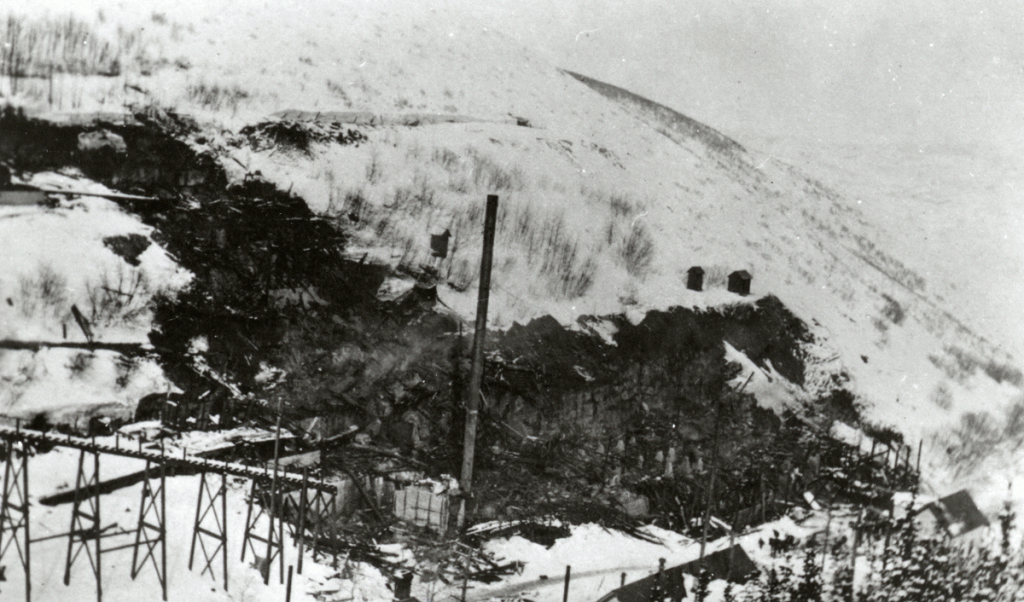The Silver King whistle started to blow a warning at 8:45 p.m. on a cold night, January 27, 1921. It could be heard in town and startled everyone since it continued to blow, since normally the whistle blew briefly to signify the end of a shift. Soon after this, the night sky to the west of town was lit up by flames from a serious fire. The Silver King mill was burning down.
According to the Park Record, the fire started in the boiler room and quickly spread through the mill which was built in 1898 – almost entirely of wood: wooden beams, floors, even wooden tanks and launders (pipes). Many local volunteers rushed uphill along King Road in an attempt to extinguish the fire but were stopped by mine officials as they approached the mill. They were afraid the fire could reach the mine explosives storage shed which was located northwest of the mill.

Credit: Park City Historical Society & Museum, Ray and Lillian Wortley Collection
Two hundred mine employees were recruited to fight the blaze. Many of the single miners were living in bunk houses near the mill and shaft house. The fire was intense and soon spread throughout the mill. They had just built a new froth flotation addition which utilized pine oil in the process. The oil storage tanks quickly caught fire and added to the conflagration which was well underway.
Attempts to put out the flames with water hoses proved futile. However, the enterprising miners adopted a mining-related fire-suppression technique used with great effect to stop the disastrous town fire of 1898: they used dynamite to blow up some of the structures – in particular, those which linked the mill to the rest of the mine surface facilities including snow sheds and conveyor galleries.
As a result, the fire was contained to the mill. Most of the rest of the surface facilities including the sampler building, aerial tramway, bunk houses, shaft house, and even the hog shed were saved. The fire was finally extinguished twenty-four hours later. Three men were slightly injured fighting the fire but there were fortunately no fatalities. Insurance covered most of the loss.

Credit: Park City Historical Society & Museum, Himes-Buck Digital Collection
Construction of a new mill started almost immediately. The new mill, the one that exists on the same site today, incorporated concrete and steel construction and utilized all the latest ore concentration technology – namely, jigs, tables, and froth flotation. An added benefit of the new mill was the utilization of more open spaces, windows, and greater use of electrical lighting. The result was a plant that was lighter and safer than the old wooden plant. It occupied a much smaller footprint than the old mill and was able to process about 50% more ore.
The big advantage of the Silver King operation was that the mined ore had a very high quality – the highest in the Park City District. Only about one-third of mine production had to be upgraded in the mill. As a result, mine production could continue while the new mill was being erected. The lower grade ores that required processing were mainly stored on the surface or underground. The mine continued to be profitable throughout the construction period. In a feat that would be difficult to replicate today, the new mill was in operation just thirteen months after the fire.
A disaster such as this could have been the death knell for many similar mining operations. The quick responses by the Silver King employees, hard work by the engineering and construction crews, and the rich mine ores enabled the operation to succeed and the all-important mine dividends to resume.
Donovan Symonds is a retired mining engineer, museum docent and committee member of Friends of Ski Mountain Mining History. He will be hosting a virtual museum lecture over Zoom on Wednesday, February 10 from five to six p.m. titled The Complex Role of Coal in the Development of the West. Register at parkcityhistory.org.